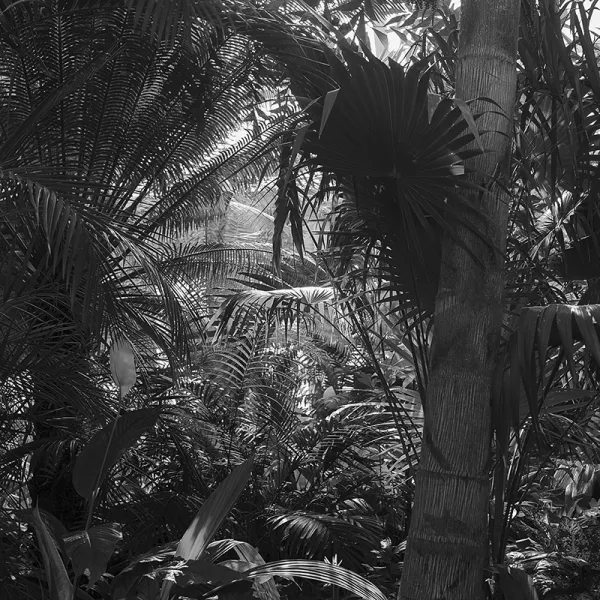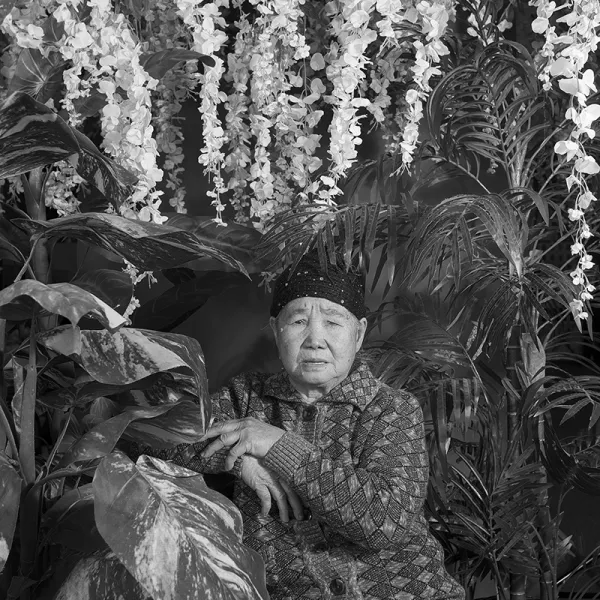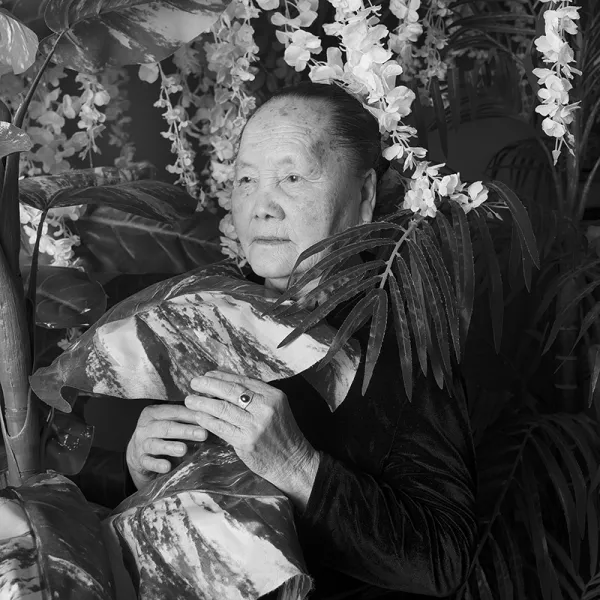November 2, 5-7 p.m.
Visiting Artist Lecture: Thursday, November 14, 7 p.m.
Her explores the original loss of the Hmong homeland and a recent, traumatic and divisive incident in the Hmong community—the swindling of over 400 Hmong elders in the United States via a fraudulent investment scheme. Studio portraiture is combined with images of tropical, greenhouse foliage to highlight themes of displacement, geography and the collective yearning for home.
Her is the 2019 artist in residence for the Amy Marie Sears Memorial Visiting Artist Series.
Artist Biography
When Women Were Girls focuses on the days when women played and explored with ease, curiosity, and intentionality. For Liberian women, this is a familiar way to describe their girlhood through innocence and authenticity within their Liberian identity. Liberians are a unique group of people displaced while also being discovered.
The stories of Liberia are of joy, laughter, and the sorrow of resiliency. This exhibition is part of a more extensive series of works unraveling Liberia's identity through abstractions and figurations that speak on moments of belonging and double consciousness. The paintings in this show depict Liberian women in my community, family members of friends, and from my childhood. The colors within each piece further highlight the subjectivity of Liberian women in their prime, fullness, and what Liberians like to call the “Big Jue” season. The paintings in this exhibition invite the viewer to imagine themselves as children again with all their flaws, convictions, and history. And further, ask themselves which part of these moments shaped who they are today.
Artist Statement
After the Fall of Hmong Tebchaw (country) expresses the deep sense of loss Hmong elders have for their beloved homeland. The series is comprised of black and white photographs, half of which depict individual elderly Hmong women enveloped in abundant backdrops of artificial foliage, and half of which depicts flora, particularly tropical plants in the Como Park Conservatory in St. Paul, Minnesota, an abundant and lush displaced environment.
The title of this photographic series (and the accompanying exhibition) refers to both the original loss of a Hmong homeland and also to a recent traumatic and divisive incident in the Hmong community—the swindling of the more than four hundred Hmong elders in the United States via a fraudulent investment scheme called Hmong Tebchaw, conducted by now-convicted con man Seng Xiong. Seng Xiong convinced Hmong elders to invest in an account bearing his name and in exchange for payments of $3,000 to $5,000, promised his victims land, a horse and many other benefits in a future Southeast Asian country to be established as a Hmong nation. Xiong claimed to be working with the United States White House and the United Nations to establish this new Hmong country. Upon moving to the newly created country, the Hmong founders would receive financial benefits such as free healthcare and education.
Although Xiong was sentenced to over seven years in prison in October 2017, many of his victims remain conflicted by the verdict. Some even believe that Xiong is the real victim of a corrupt United State government intent on denying the Hmong people a homeland. The yearning that enabled the swindle persists among the aging Hmong population who retain a living memory of Laos as their homeland, and who hope to see a homecoming within their lifetimes.
This series proposes a response to Xiong’s false promise. The portraits are not misguided nostalgia or vulnerability expressed by the calm countenances of these Hmong women. Instead, they exude patience, pride and hope. The photographs playfully but emotionally perform their own act of homeland imagination, capturing—through portraiture—the dignity, beauty and grace of elder female Hmong refugees set against formal backdrops of artificial foliage. The artificial plant backdrop conceals the real setting of the photographs (an elder center in St. Paul). This portrait setting also refers to historic Hmong practices of portraiture in formal poses set against idealized painted Laotian mountainscapes and artificial florals.
My use of shadows and contrast serve to momentarily “fool” the viewer’s eye into believing in the authenticity of the foliage that surrounds and at times occludes the subjects. In this way, my photographs perform my own playful deception, an ironic and ultimately subversive echo of Xiong’s swindle. The monochromatic format hearkens to nostalgic forms of photographic portraiture, but also serves to conceal the artificial nature of the foliage. The images foreground the idea of artificialness, which stands in contrast to the natural and serene poses of the subjects—an acknowledgement of the fact that these “fake” plastic plants are in fact the common interior environmental décor found in senior centers and private homes in urban and suburban America, the likely permanent home for the portrait subjects. Through this compositional technique, I pose a series of questions: will a Hmong homeland be recreated in these subjects’ lifetimes? Or is their new diasporic community itself a kind of Hmong homeland, reconstituted amid the clutter and glut of globalized commerce and modern comfort? In this series, the environment is false yet comfortable, while the subjects’ yearning and hope are patently real.
In the conservatory photos, glimpses of modern architecture—skylights, steel structural frames and a single security camera—reveal the artificial construction containing natural elements, providing an uncanny contrast to the portraits. Here, real plants are devoid of human or geographical context. My own childhood visits the Como Conservatory inspired these photographs, which center the camera’s gaze on plants from Laos and other tropical greenery that holds no authentic geographical connection to Minnesota, much like the uprooted Hmong themselves finds community in a climate and landscape far different from their native territory. In the form of tropical trees and ferns, fragments of a Hmong homeland are literally rooted here in urban America, though they may exist only in the form of flora planted in glass-encased museums, far from their native soil.
After the Fall of Hmong Tebchaw expresses the ache at the heart of the diasporic Hmong identity—a population who, through its elders, still maintains an authentic, if ever-present connection, to an original homeland.
Image Gallery
Click an image to view in larger size








